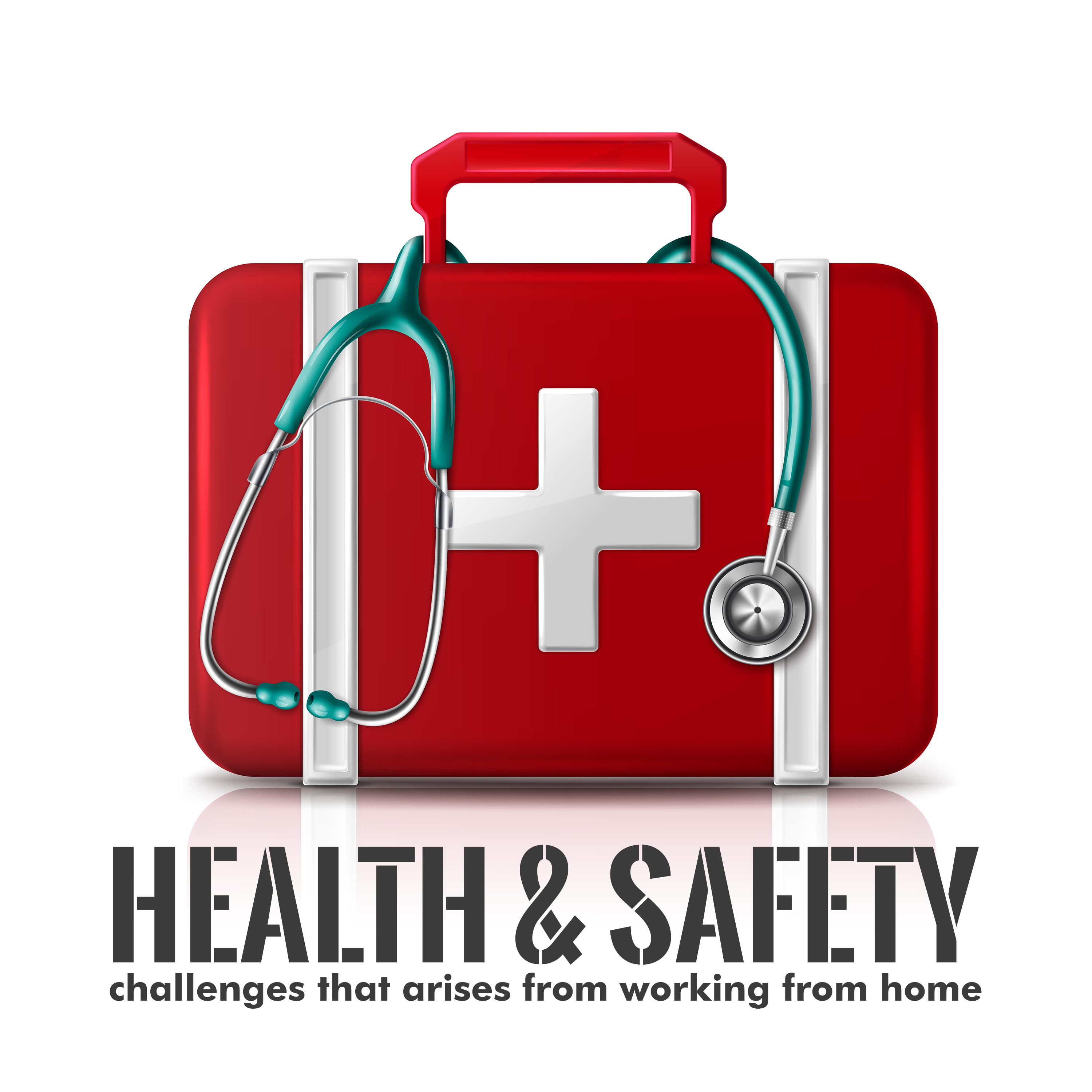INTRODUCTION
Working from home, for most organizations, has become the “new normal” as part of the effort to slow the progression of COVID-19 through social distancing. This new normal has health and safety implications on employees.
As an employer, protecting employees from health and safety risks is an everyday challenge. When you have employees working from home, risk management becomes even more complex.
This article details some of the health and safety challenges that may arise from working from home and highlights some mitigation employers can employ to help foster the health and safety of employees working remotely.

HEALTH AND SAFETY CHALLENGES THAT MAY ARISE FROM WORKING FROM HOME
- Poor Ergonomics
As an employer, you probably supply your in-office workers with high-quality ergonomic furniture and supplies. But what about employees working from home?
Without proper ergonomics, remote employees are at risk of developing health problems over time. For example, hand, wrist, and arm problems are common in office workers. Without a wrist rest, mouse, or correctly adjusted workstation, they are even more at risk of carpal tunnel, tendonitis, sprains, and strains.
Employees have to sit at their workstation for eight hours, so ergonomics are essential. However, remote workers may not have a desk or chair suitable for full-time work. An unsupportive chair may cause poor blood circulation and joint and muscle problems in the hips, knees, or back.
To protect both your company and employees, take more precautions rather than less. Reduce the risk of health issues caused by poor ergonomics by:
- Reimbursing remote employees when they purchase ergonomic items for work.
- Providing remote employees with the same ergonomic furniture and supplies available at the office when they start the job/start working from home.
- Conducting ergonomic assessments on all remote employees and providing them with their recommended items
- Environment-Caused Injuries and Illnesses
A remote employee’s work environment consists of more than just their desk. If it’s not safe, the area they work in can lead to injury or illness.
For instance, working in low lighting can cause eye strain or even blindness. Poor ventilation or air quality can cause headaches, lung infections, and sinus problems. A work environment that’s too loud might be distracting and reduce the employee’s productivity but could also lead to hearing loss.
To avoid confusion (and possible legal ramifications), write a remote work health and safety policy that answers the following questions:
- Will a company representative go to remote employees’ homes to help them set up their workstations?
- To conduct safety assessments, will an employee representative go to the homes, or will you use employee photos or checklists?
- Are the bathroom and kitchen considered part of the workplace?
- How will you investigate accidents and incidents?
- What are the procedures for reporting an accident or incident for remote employees (i.e., time limit, to whom, how)?
In addition, ensure remote employees work in a safe environment by requiring that:
- The employee’s workspace is large enough for their equipment, and that all furniture is stable.
- Power cords are tucked away, and the workspace is clear of clutter.
- The workspace is well-lit and ventilated properly.
- Carpets are secured to the floor to avoid tripping hazards.
- Heavy items are not stored on high shelves, as they could fall on the employee.
- Fire and Weather Emergencies
Every employer has emergency procedures for their workplace. Make sure your employees working from home do, too.
Safeguarding the workplace environment against fires and natural disasters can be difficult for remote employees.
Keep remote employees safe in fire and weather emergencies by ensuring that:
- Cords, papers, and other combustible items are organized and stored away from heat sources.
- Smoke and carbon monoxide detectors are installed and in working order.
- Outlets are grounded and not overloaded.
- Electrical equipment has surge protection.
- They have an evacuation plan.
- Exits are unobstructed.
- The work area has more than one exit.
- A fire extinguisher is in or within easy access of the work area.
- The electrical system is in good condition and sufficient for the employee’s work.
- Switches and outlets are covered with plates.
- They have emergency supplies, including a first aid kit, flashlights, blankets, etc.
- Mental Health Issues
Not all health and safety issues faced by employees working from home are physical. Working alone at home all day can take a toll on remote employees’ mental health.
Remote workers cite loneliness as their biggest challenge. Without the camaraderie of an office setting, they may feel isolated and left out.
To support your remote employees’ mental health:
- Offer mental health benefits.
- Use technology to keep employees connected for both work and social events.
- Schedule regular check-ins with remote employees
- Encourage physical fitness.
- Be flexible with remote employees’ work hours.
- Recognize and reward remote employees when they do good work.
- Encourage good work/life balance.
- Share mental health resources with all employees.
Conclusion

In the circumstances such as a global pandemic, these best practices may not be possible. However, it’s essential to consider them and do what you can when your employees work remotely. Working from home has its health and safety implications, and employers must try their very best to mitigate the risk according to international best practices.







No Comments